Our Pre-Chistmas City Walk – On Thursday 7th November 2017 I met up old friends, all photographers, for the early Christmas social event we’ve organised most years. It had proved difficult to find a date everyone could make and several of the group were missing and we were down to five of us.
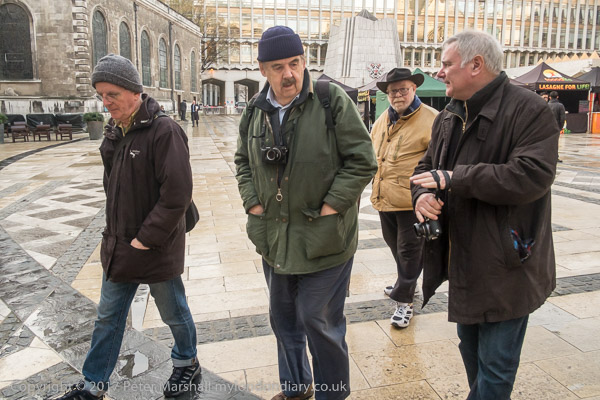
It’s a sobering thought that six years on only three of the five are still in the land of the living, with first Alex and more recently John having died. I’ve several times written about John Benton-Harris on this site over the years and he also years ago contributed two guest posts, as well as featuring his surprise 70th birthday party in 2009.
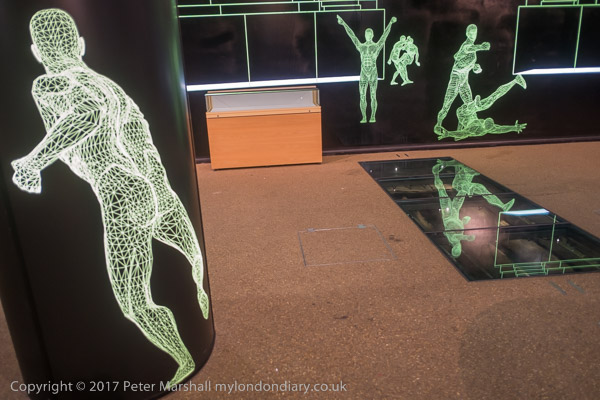
I’d worked with John in recent years on producing a number of books, including a few for the Café Royal Books series, including his Saint Patrick’s People, though his major work, ‘Mad Hatters’ on the English sadly remains unpublished. And I’d gone with him taking pictures to St Patrick’s Day events in London and elsewhere. Although he had some health problems and was in his 80s, his death still came as a great shock to us all.
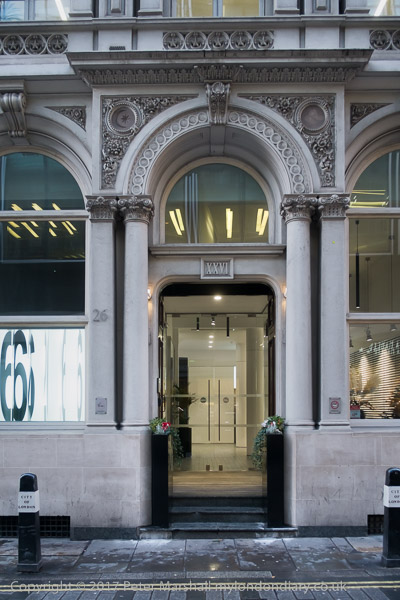
We met at St Paul’s Underground Station and our first visit was to the Guildhall Art Gallery, where we went “down into its depths where a few years ago the remains of the Roman Coliseum were discovered and are now rather well displayed, before looking at the City of London’s art collection on display. It’s a rather mixed bunch with some fine works ancient and modern along with some rather tedious municipal records of great occasions that would have looked fine in the Illustrated London News but don’t really cut it as vast canvasses on the gallery wall.” (Quotes her are from my article written here in December 2017)
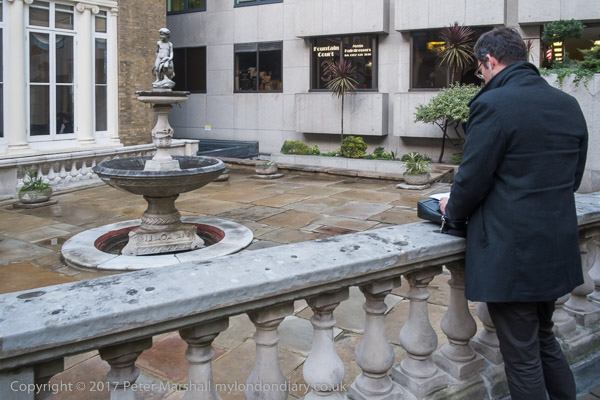
Some years earlier in 2005 I had been to the opening of a show at the gallery featuring works by some of London’s best-known living painters curated by Mireille Gailinou for a now defunct organisation I was then the treasurer of, London Arts Café, ‘London Now – CITY OF HEAVEN CITY OF HELL’ and had given my opinion on the gallery’s collection to the then curator who was very shocked when I’d said I would quite happily burn one of the largest canvases. Fortunately that had not resulted in me being banned from the gallery!
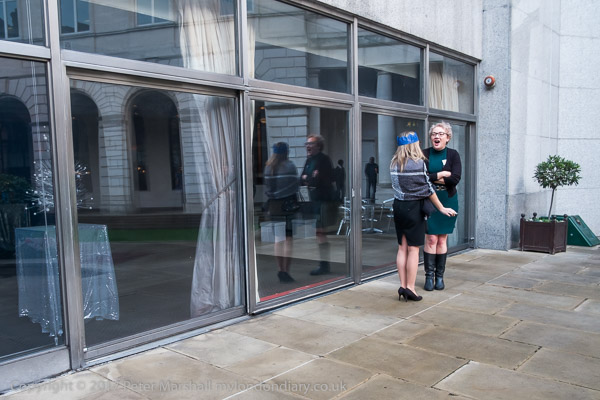
That show is now long gone, as too is the London Arts Café, but its web site with more about this and other shows and events we organised remains currently on-line. And despite my opinions the Guildhall Art Gallery is still worth visiting both for the artworks and certainly for its Roman remains and entry is free.
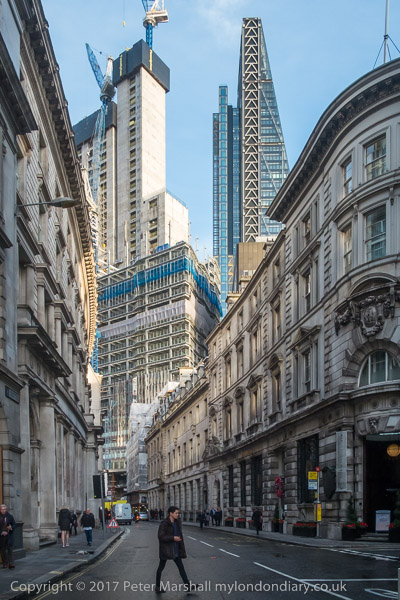
From there we walked “on past the Bank of England we walked into Adams Court and walked around in a circle before driven by thirst to the Crosse Keys, where I failed to resist the temptation of a pint of Smokestack Lightnin’, a beer from the Dorking Brewery, named after my favourite Howling Wolf track – I still somewhere have the 45rpm record. It was the first time I’ve come across the idea of a ‘smoked’ beer, and while interesting I think it would be best drunk around a bonfire.”
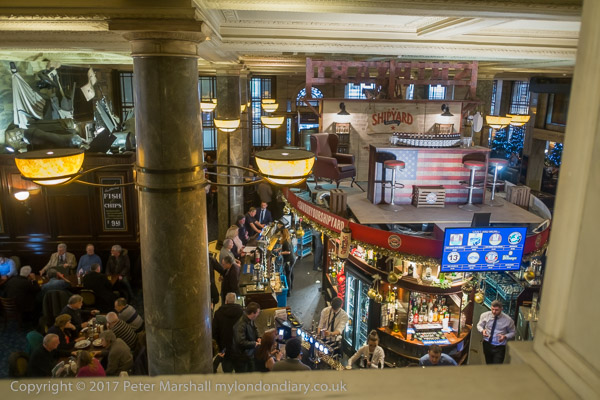
John had left us when we went into the pub, saying there was still light to take photographs and he wanted to make the most of it, but he seemed seldom to enjoy coming with us into pubs. The Crosse Keys is one of many interesting buildings – old pubs, theatres, cinemas, banks etc – around the country that Wetherspoons have taken over and preserved and though their owner has terrible politics and the chain poor conditions of service they offer cheap and generally well-kept beer and plain good-value food. Obviously their staff should unionise and fight for better terms.
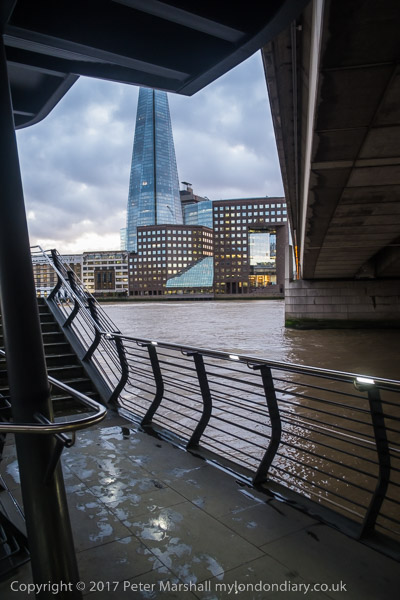
We didn’t stay long in the pub, just a quick pint on the balcony and a short visit to the toilets in the depths, before leaving. Alex said goodbye here, seeing a bus that would take him back home to Hackney rather than go west with us, and I led the remaining two “down to the river, where we turned upstream along the Thames path. The light was fading a little, but perhaps becoming more interesting, but when we left the river at Queenhithe it was time to make our way back to St Paul’s to catch a bus and get a table for our meal together before the city workers crowded in.”
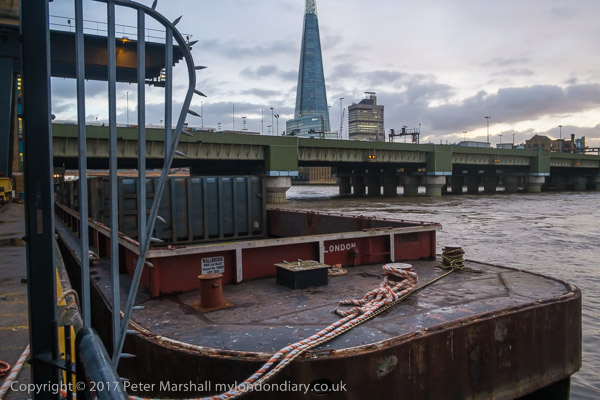
All the pictures accompanying this post were made with a Fuji X-E1 and 18mm Fuji lens, an almost pocketable combination. The 18mm f2 is probably my favourite Fuji lens, though often I prefer the added flexibility of the slightly slower but still fairly compact 18-55mm zoom. Later I moved up to the X-E3, which has better auto-focus and a significantly larger sensor and is slightly smaller, but both are still very usable cameras, and the X-E1 is now available secondhand pretty cheaply. It’s still a great camera for street photography and as an introduction to the Fuji range.
A few more pictures at Photographers Walk.